Last Chance to Catch NYC's Holiday Notalgia Train
We met the voices of the NYC subway on our nostalgia ride this weekend!


At Untapped New York, we’re dedicated to bringing you the best of New York’s cultural life and nightlife. Previously, we shared our picks for the best hidden bars in the City. Now we’re bringing your our list of the best bars in NYC where artists have left their mark, from Upper East Side institutions like Bemelmans Bar and the King Cole Bar in the St. Regis to the trendy Ace Hotel, with a collage by street artist Michael Anderson. Though a couple of cocktails at some of these bars might be a bit of a splurge, we think it’s worth it for the chance to soak up the atmosphere in these one-of-a-kind places. After all, you won’t find these works of art anywhere else in the world.
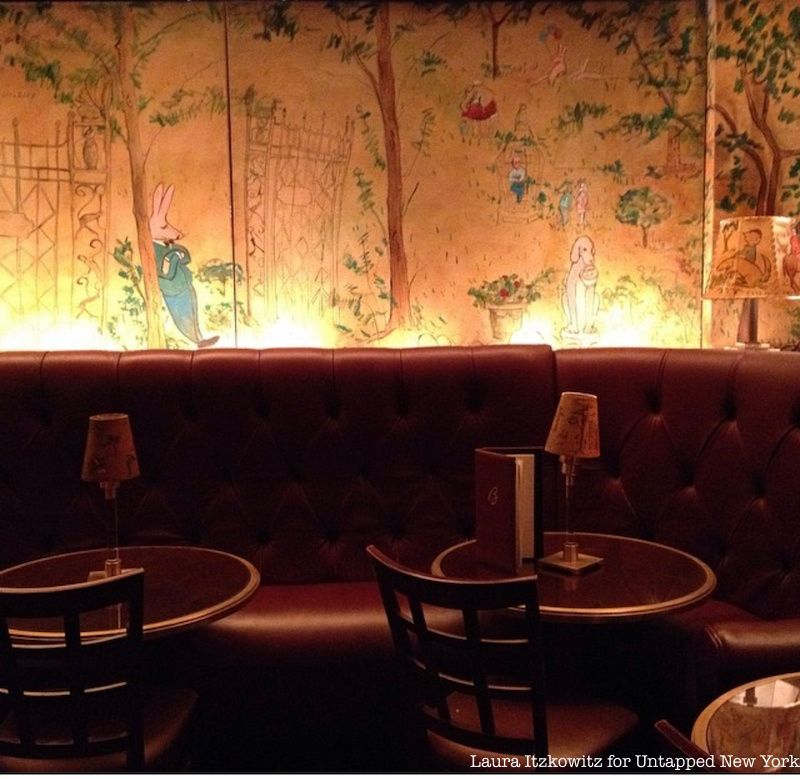
In exchange for one and a half years of room and board for himself and his family, Ludwig Bemelmans painted the walls at the Carlyle Hotel Bar in 1947. As a result, the bar was renamed Bemelmans Bar. The murals depict Central Park throughout the seasons with a cameo by the character from Bemelmans’ popular children’s books, Madeline.
Bemelman’s Bar is located at 35 East 76th Street in the Carlyle, a Rosewood Hotel.. Every evening, a pianist plays live music, enhancing the bar’s old New York vibe. Bemelmans also serves one of the best Martinis in the city. Whether you are going to Bemelman’s Bar to see jazz or to have a cocktail, you will be rewarded with Ludwig Bemelman’s only public work of art.
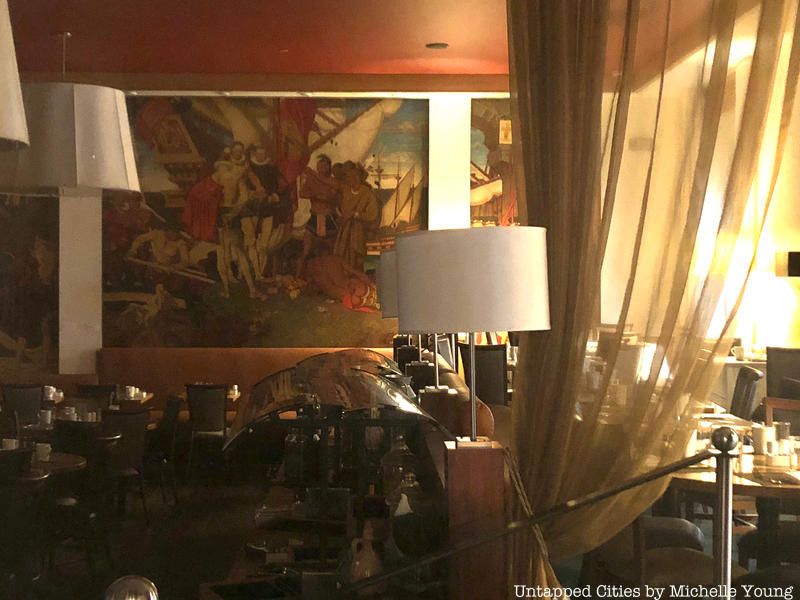
Murals on 54 is located in the Warkwick Hotel‘s former Raleigh Room, both of whose names were derived from Dean Cornwell’s works of art. In 1937, publisher and Citizen Kane, William Randolph Hearst, commissioned Dean Cornwell to paint a mural for the restaurant at the Warwick Hotel, which he owned.
Cornwell painted the 1584 scene of Sir Walter Raleigh receiving his charter from Queen Elizabeth I and Raleigh landing at the lost colony of Roanoke. Cornwell and Hearst reached a barter agreement for the murals. However, their agreement is a lesson in why one should never barter with an artist. As a result of a dispute which arose from the agreement, Cornwell painted, what one journalist at the time described as “one of the most colorful spots in the City.” Cornwell’s revenge art included a depiction of a man urinating on the Queen, another man urinating on Sir Walter Raleigh, and an American Indian without his pants. Cornwell and Hearst eventually worked out their differences and Cornwell painted over one of his colorful additions. As a result of the controversy surrounding Cornwell’s creativity, the mural on the left side of the restaurant was covered for more than forty years. The murals were later restored and adds to the ambiance of the restaurant.
Dean Cornwell was chosen by Hearst because of his reputation and his abilities. He was known as the Dean of American Illustrators. Born in 1892, Cornwell worked his way through magazine illustrations (for Cosmopolitan, Harper’s Bazaar, and Good Housekeeping) before becoming the President of the Society of Illustrators in 1922. In the late 1920s, Cornwell began his career as a muralist. His commissions graced the Los Angeles Public Library, the Detroit Athletic Club, Rockefeller Center, New York’s General Motors Building at the 1939 World’s Fair, the Bethlehem Steel Company, the New England Telephone headquarters building in Boston, and the 21 Club, which unfortunately closed during the COVID-19 pandemic and may never reopen.
Cornwell died in 1960, but his work is still coveted. The Warwick Hotel was approached by the Museum of Modern Art, which wanted to purchase Cornwell’s murals for $100,000. Patrons at Murals on 54 are lucky the hotel declined the museum’s offer.
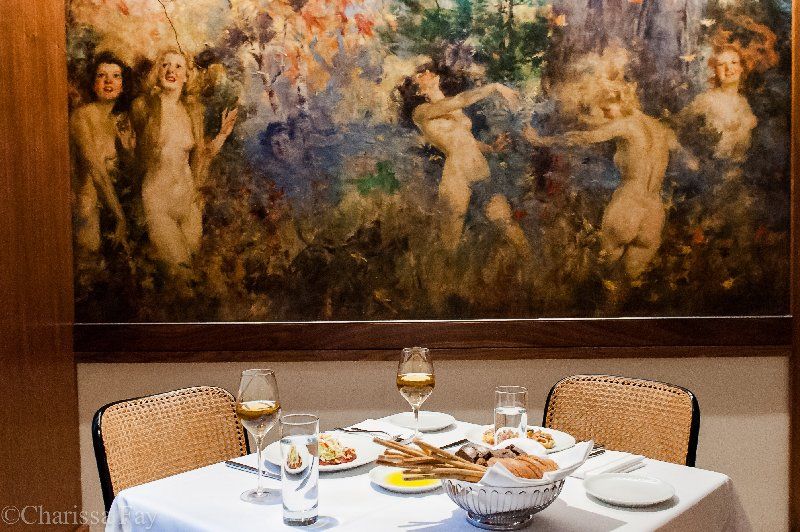
The Leopard occupies the storied space at 1 West 67th Street, that once housed Café des Artistes in the 1917 George Mort Pollard Gothic designed Hotel des Artistes. It was said to be the largest studio building in the world, when it was completed, and was the fifth studio building on the block.
The Café des Artistes was created to provide meals for residents of the Hotel des Artistes, many of whose apartments had no kitchens, but who would buy their own ingredients for the chefs to prepare. In the 1920s, American illustrator, and Hotel des Artistes resident, Howard Chandler Christy, painted a series of nine murals, entitled “Fantasy Scenes with Naked Beauties,” on the walls of the restaurant. In August 2009, Café des Artistes closed and in May 2011, the Leopard opened.
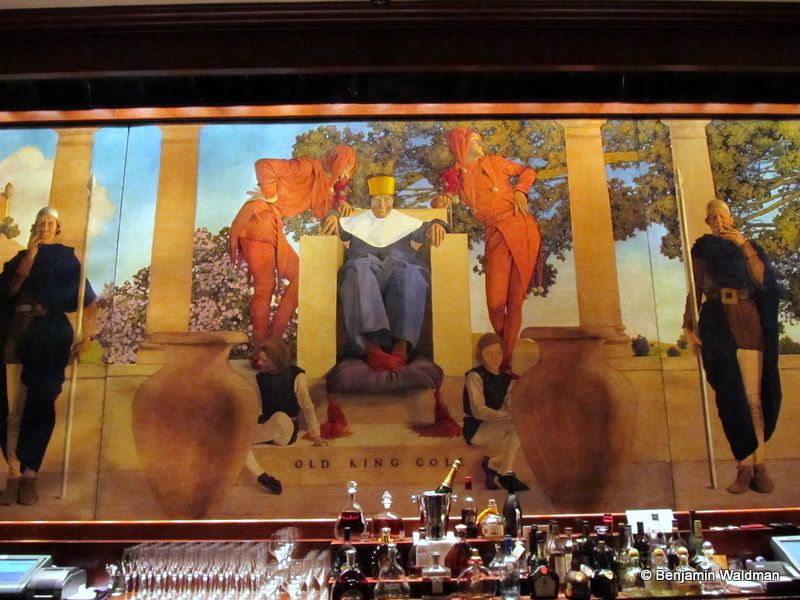
The King Cole Bar, located in the elegant St. Regis Hotel, is famous for its namesake mural and for being the birthplace of the Bloody Mary cocktail. The mural, painted by illustrator Maxfield Parrish, was originally commissioned by John Jacob Astor IV in 1909 for his Knickerbocker Hotel. Parrish was reluctant to paint the mural due to his Quaker upbringing, but ultimately agreed for the sum of $5,000. Old King Cole is thought to have been modeled on Astor, but there does not appear to be any resemblance between the two.
In 1921, Vincent Astor, John Jacob Astor IV’s son, converted the Knickerbocker Hotel to office space. In 1935, Astor transferred the mural to St. Regis Hotel, which he also owned. The mural was placed in the hotel’s bar, which was renamed after it. The mural was cleaned and restored in 2007 at a cost of over $100,000, during which time a replica of the mural hung in its place. Today, Old King Cole continues to watch over the bar and its patrons.
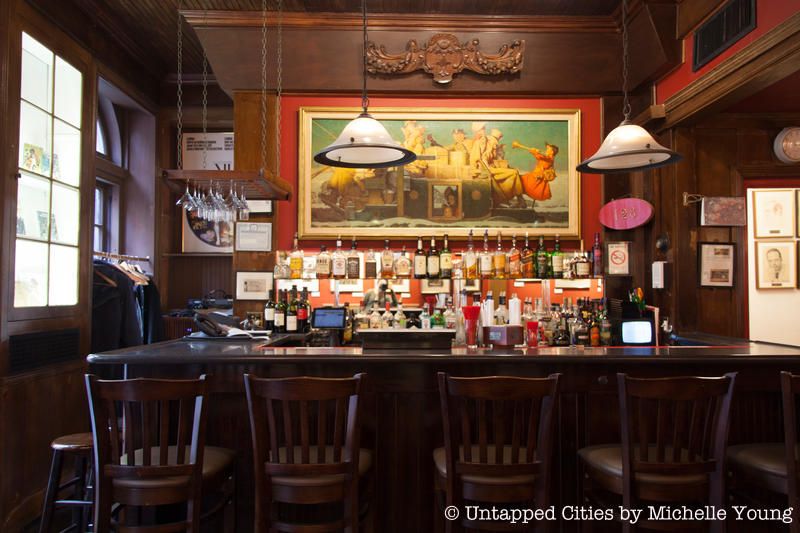
The Society of Illustrators is located at 128 East 63rd Street in an 1875 carriage house built for William P. Read, J. P. Morgan’s personal secretary. The dining room is located in the Hall of Fame gallery, on the building’s third floor. Situated behind the bar is Norman Rockwell’s Dover Coach, which was gifted to the Society by the illustrator himself. Its location is fitting because in 1959, Rockwell became the first member to be elected to the Hall of Fame.
As Kate Kelly wrote in a previous Untapped New York article, “In a modern context, the Society acts as a gathering place for industry folks and fans, celebrating the best in contemporary illustration through various gallery and award shows. Scholarships are given to students (they also hold an impressive show annually), there is a weekly sketch and jazz night, one can regularly attend lectures and screenings, and the bar and dining room upstairs, complete with an impressive original Rockwell, is surely one of the most elegant in the city.”
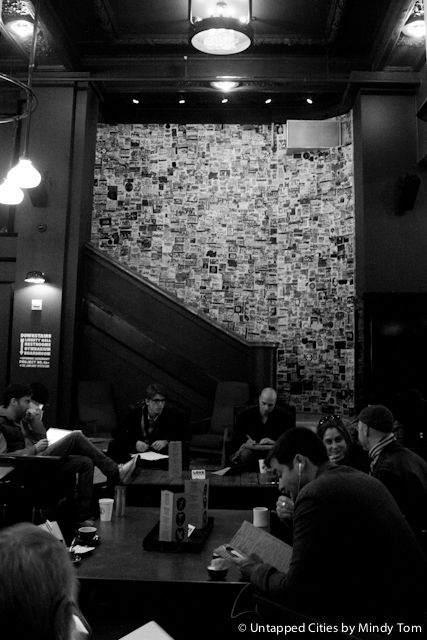
Street artist Michael Anderson was commissioned in 2009 to create a collage for the Ace Hotel made from his collection of graffiti stickers (unofficially considered the world’s largest collection, according to NY Mag.) Anderson had been collecting the stickers, which he would peel off subway entrances, lampposts, walls and other public places and keep in a notebook, since the early ’90s. His collage in the trendy Ace Hotel shows what art has become.
The hotel’s restaurant, the Breslin, and the John Dory oyster bar, which were run by acclaimed chef April Bloomfield, have both closed. Currently, the only place to eat and drink in the hotel is the lobby bar.

Located at 59 Grove Street, Marie’s Crisis is housed in an 1839 building. Its name is derived from Thomas Paine’s essay, The American Crisis, since Paine died on the site in 1809, and from Romany Marie, who was the proprietor of several tearooms in Greenwich Village at the turn of the century. Today, Marie’s Crisis is a piano bar where a showtune is never far away and was a former haunt of Eugene O’Neill and Edward VIII. The ambiance is aided by a WPA mural, whose origins are unknown. The mural behind the bar depicts the French and American revolutions and another mural entitled La Convention depicts Robespeirre, Danton, and Paine.
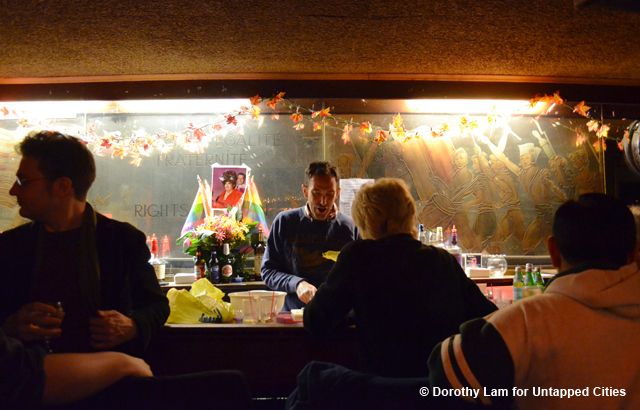
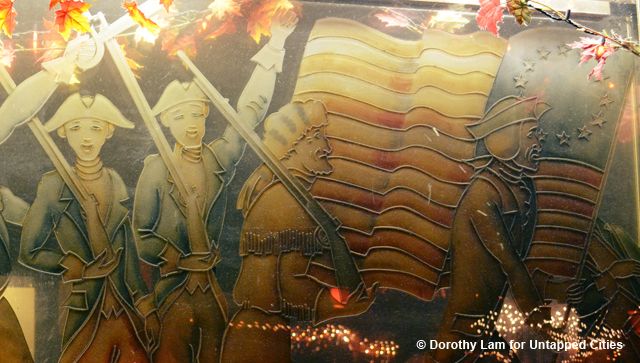
Next, read about the 15 oldest restaurants in New York City!
Subscribe to our newsletter